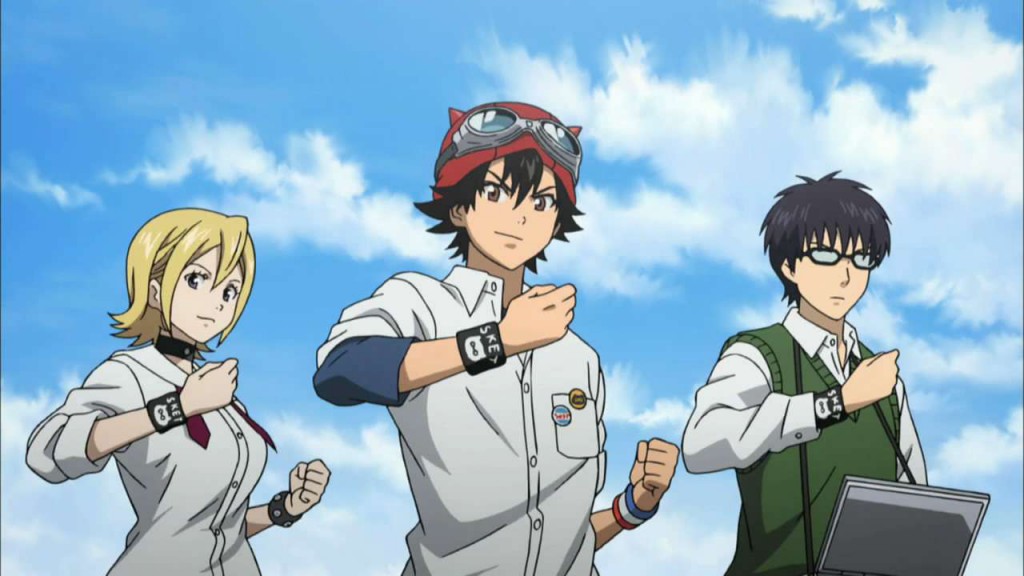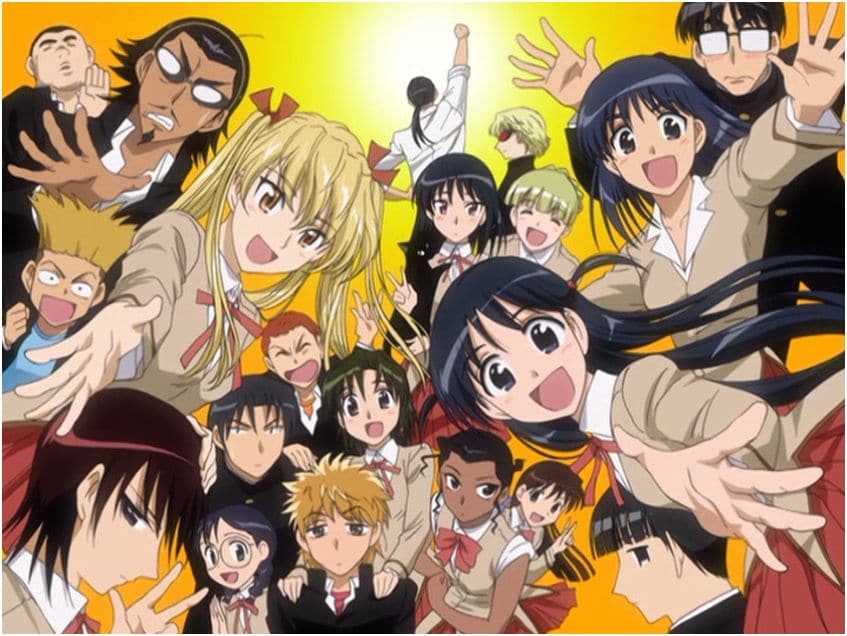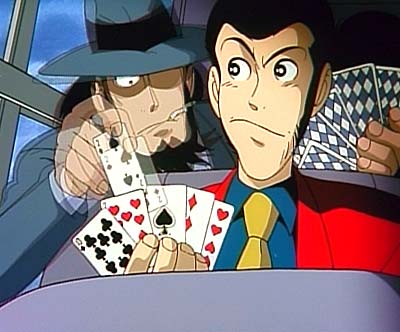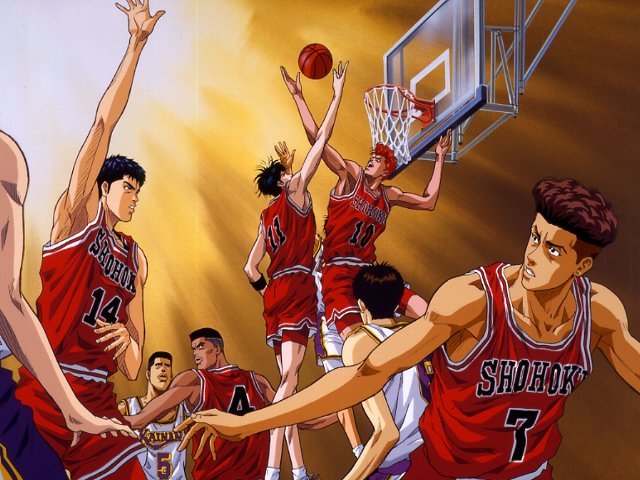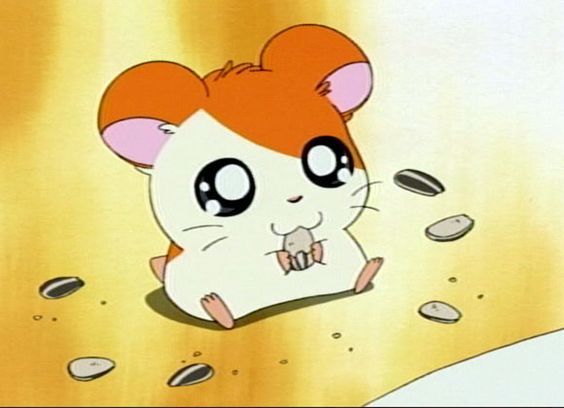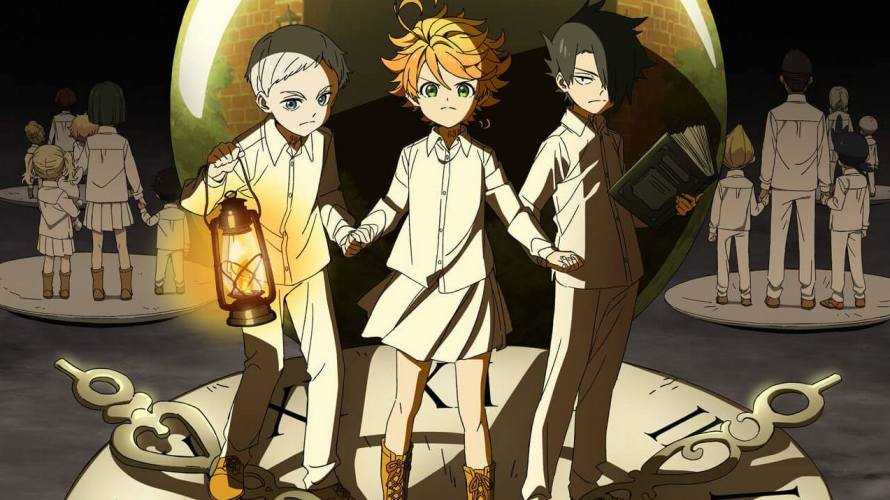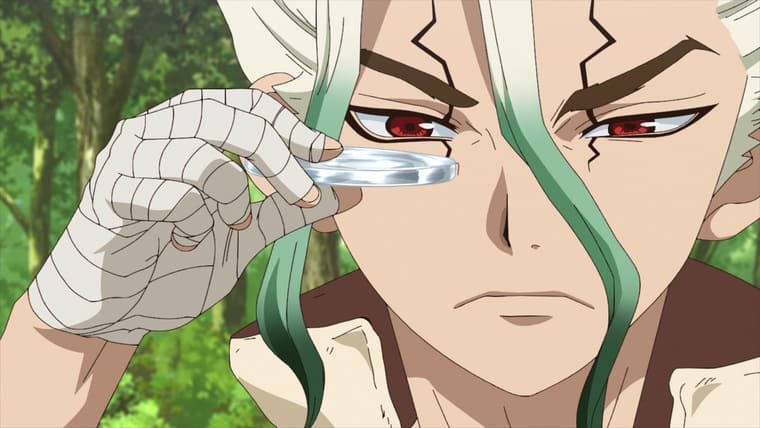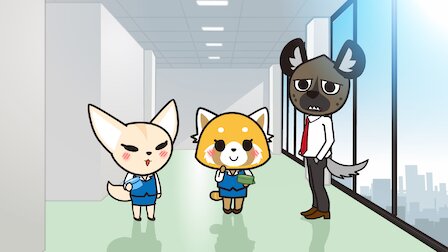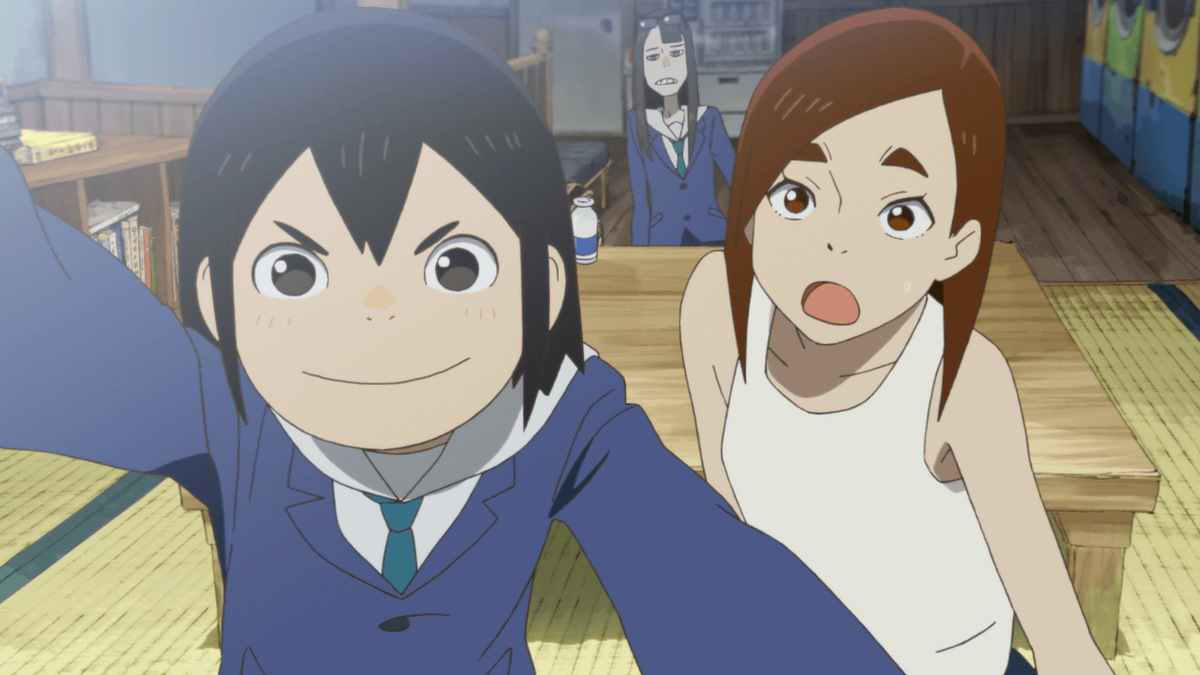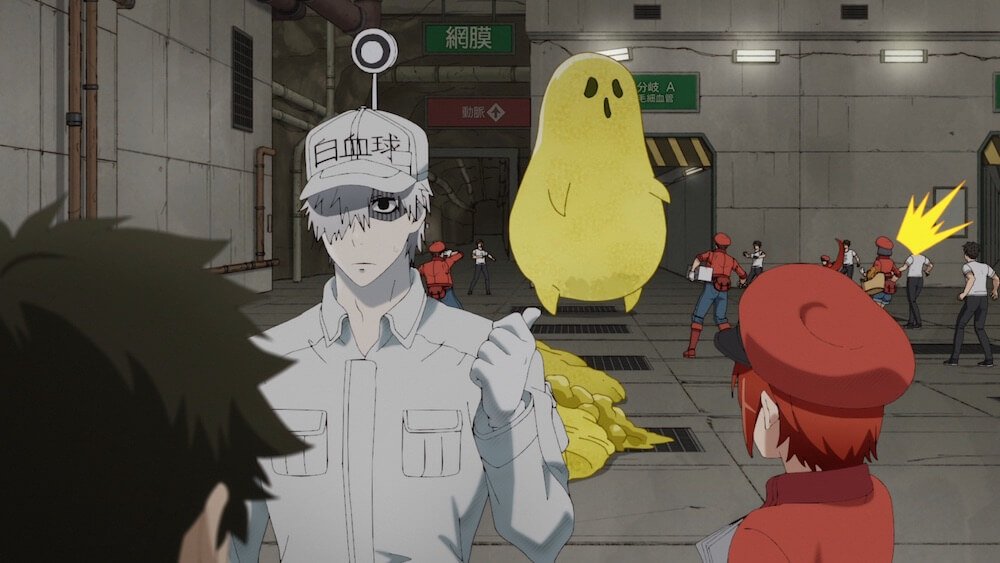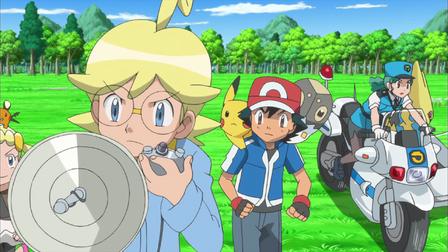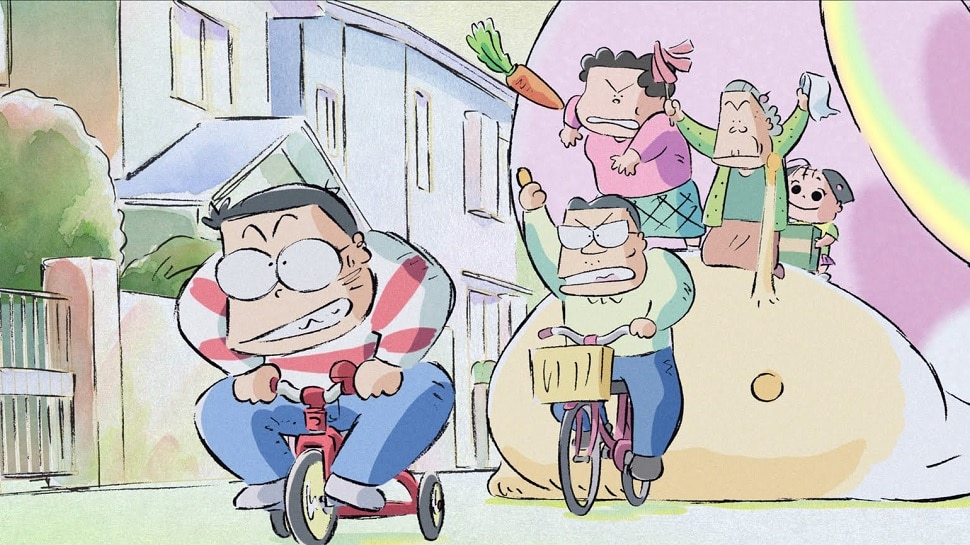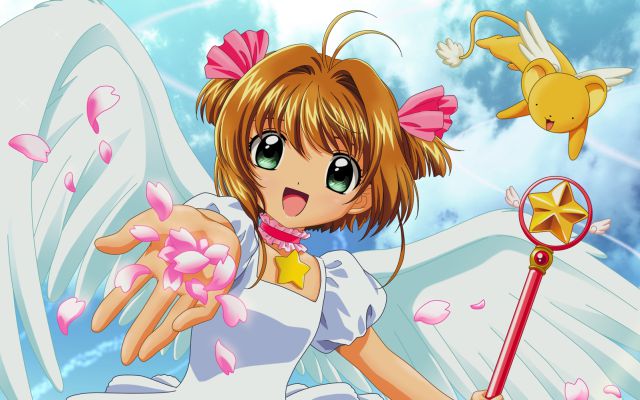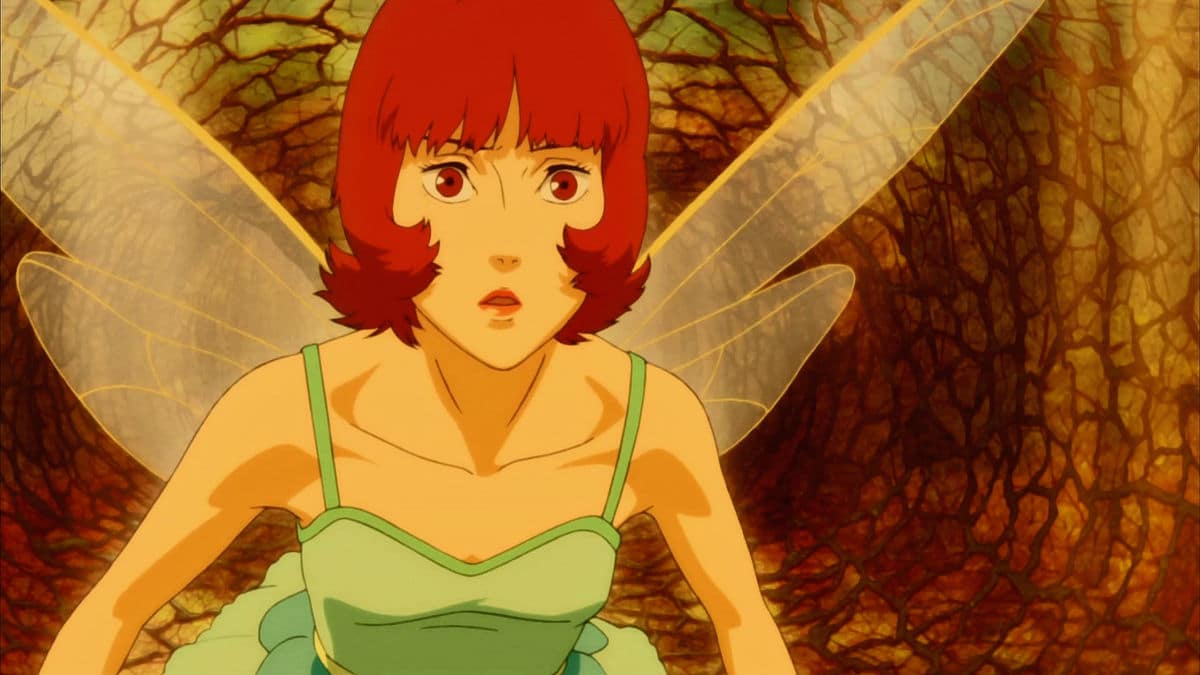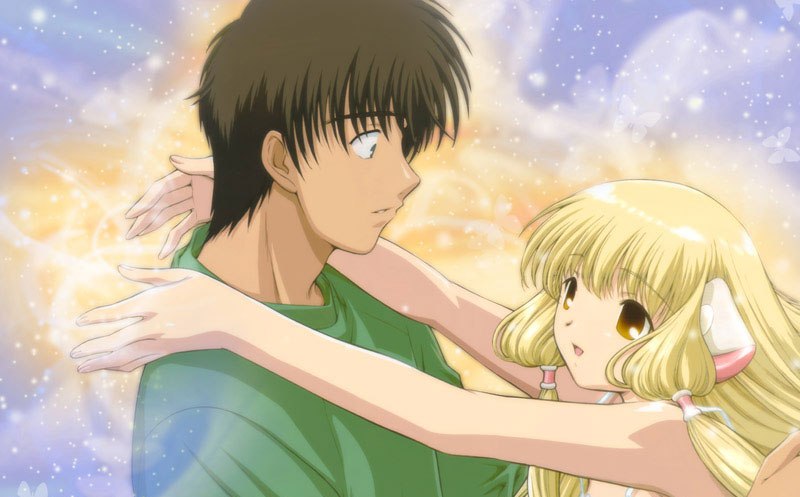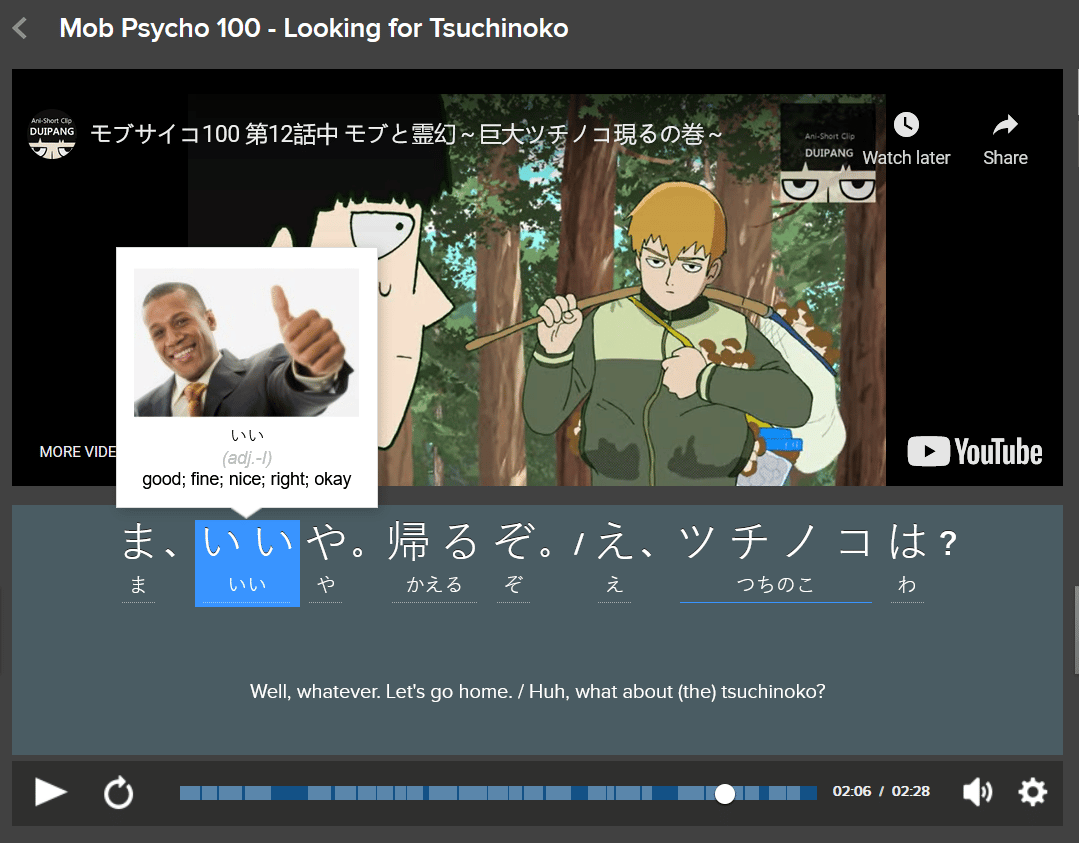
Learn Japanese with Anime: 37 Anime Series and Movies for Every Level
Tired of learning Japanese with textbooks?
Get yourself out of your language learning rut by getting into anime.
We’re here to tell you that you can learn Japanese with anime, but it will take plenty of work and you can’t rely solely on anime for a full education in the language.
Read on to find 37 awesome anime series and movies perfect for learning Japanese and how to milk them for their language-learning content!
Contents
- 1. SKET Dance — スケット・ダンス
- 2. School Rumble — スクールランブル
- 3. Hyouka — 氷菓
- 4. K-On! — けいおん!
- 5. Detective Conan (Case Closed) — 名探偵コナン
- 6. Lupin III — ルパン三世
- 7. The Prince of Tennis — テニスの王子様
- 8. Slam Dunk — スラムダンク
- 9. One Piece — ワンピース
- 10. Naruto — ナルト
- 11. Bleach — ブリーチ
- 12. Gintama — 銀魂
- 13. Dragon Ball — ドラゴンボール
- 14. Sword Art Online — ソードアート・オンライン
- 15. Attack on Titan — 進撃の巨人
- 16. GetBackers — ゲットバッカーズ–奪還屋
- 17. Polar Bear Café — しろくまカフェ
- 18. Hamtaro — とっとこハム太郎
- 19. Haikyuu!! — ハイキュー!!
- 20. The Promised Neverland — 約束のネバーランド
- 21. Dr. Stone — ドクターストーン
- 22. Aggrestsuko — アグレッシブ烈子
- 23. Keep Your Hands Off Eizouken! — 映像研には手を出すな!
- 24. Cells at Work! — はたらく細胞
- 25. Fruits Basket — フルーツバスケット
- 26. Pokémon — ポケモン
- 27. My Neighbors the Yamadas — ホーホケキョとなりの山田くん
- 28. Cardcaptor Sakura — カードキャプターさくら
- 29. Spirited Away — 千と千尋の神隠し
- 30. Paprika — パプリカ
- 31. Witch Hunter Robin — ウィッチハンター ロビン
- 32. Neon Genesis Evangelion — 新世紀エヴァンゲリオン
- 33. Chobits — ちょびっツ
- 34. One-Punch Man — ワンパンマン
- 35. Durarara!! — デュラララ!!
- 36. Tokyo Ghoul — 東京喰種
- 37. Death Note — デスノート
- Where to Watch Japanese Anime
- A Disclaimer About Learning Japanese with Anime
- Why You Should Learn Japanese with Anime
- Tips and Tricks for Learning Japanese with Anime
- And One More Thing...
Download: This blog post is available as a convenient and portable PDF that you can take anywhere. Click here to get a copy. (Download)
1. SKET Dance — スケット・ダンス
In this energetic anime, we follow a trio of high school students determined to solve any problem that besets them in their daily lives.
Together, they’re known as the school club that handles odd jobs, and plenty of students come to them with problems they, well, don’t feel like solving themselves.
The friends are always happy to help, but the results are not always what they intended, but always hilarious.
Enjoy their escapades while learning school vocabulary!
2. School Rumble — スクールランブル
This anime is a romantic high school drama about Tenma Tsukamoto, a girl who really wants to win the love of the notorious delinquent in her school.
The story focuses on good old-fashioned high school drama and comedy as she navigates the choppy waters of love and friendship.
Due to the nature of the plot, the language revolves a lot around casual talk between close friends. Try this useful vocabulary out while chatting up your own friends!
3. Hyouka — 氷菓
Based on an award-winning manga series, this anime follows Houtarou as he participates in the high school literature club and solves perplexing mini-mysteries around campus.
He and his club-mates investigate the old urban legend surrounding their school, and in the process learn that you can find mystery and wonder in everything around you.
The language can sometimes be a little complex since there’s a lot of exposition, but each episode has a very intriguing story.
4. K-On! — けいおん!
In this idol anime, four high school girls form a band and dream of super-stardom. Watch their struggle to master their instruments and become the best of the best.
The vocabulary is less focused on high school and more on the language of performing artists, since the anime revolves around their musical careers.
5. Detective Conan (Case Closed) — 名探偵コナン
The anime shows the adventures of Conan, a high school detective named for Arthur Conan Doyle, author of the famous Sherlock Holmes mysteries.
Conan is, without doubt, the most famous detective in Japan. Since the first episode in 1996 over 900 episodes have aired! He not only appears in anime and manga but also in live-action TV shows and more.
The Conan in the anime has been transformed into a child but that doesn’t stop him from solving crimes and nabbing the bad guys.
Fans of mystery novels will love this one, which uses a mix of formal and informal language and plenty of mystery-related words.
6. Lupin III — ルパン三世
Lupin is considered to be the world’s greatest thief and, with the help of his friends, he pulls off the most daring thefts around the world while chased by Inspector Zenigata. (In fact, Lupin and Detective Conan have even gone head-to-head before!)
As you might imagine, the language used here is what you’d expect to hear on the streets—usually casual and often very gruff. Lupin himself has a very distinct way of pronouncing his words, so listen out for eccentricities!
A very popular movie about Lupin was made by Studio Ghibli’s Hayao Miyazaki under the title “The Castle of Cagliostro.” A more modern reboot is also currently available, in case you want to enjoy the escapades of Lupin in HD.
7. The Prince of Tennis — テニスの王子様
This manga and anime are considered to be the main reason why many Japanese people became interested in tennis.
The story focuses on a group of high school tennis players and their desire to improve and win tournaments. When a new player turns out to be a prodigy tennis player, their chances of becoming the best get within reach.
This is a sports anime with heart, with plenty of language relating to friendship, family and camaraderie, and it explores the drive to win in the players’ hearts.
8. Slam Dunk — スラムダンク
“Slam Dunk” is one of the best-selling manga series in history, earning over $120 million in manga sales since its debut.
It centers on Sakuragi who joins the school basketball team with the aim of becoming the best team in Japan. But first, he’ll need to learn to work with them and overcome personal and more wide-reaching issues.
In certain polls, it’s been voted as the top manga in history and one of the top anime of all time. It’s more “real” than many other sports anime, featuring very casual language between friends and teammates.
9. One Piece — ワンピース
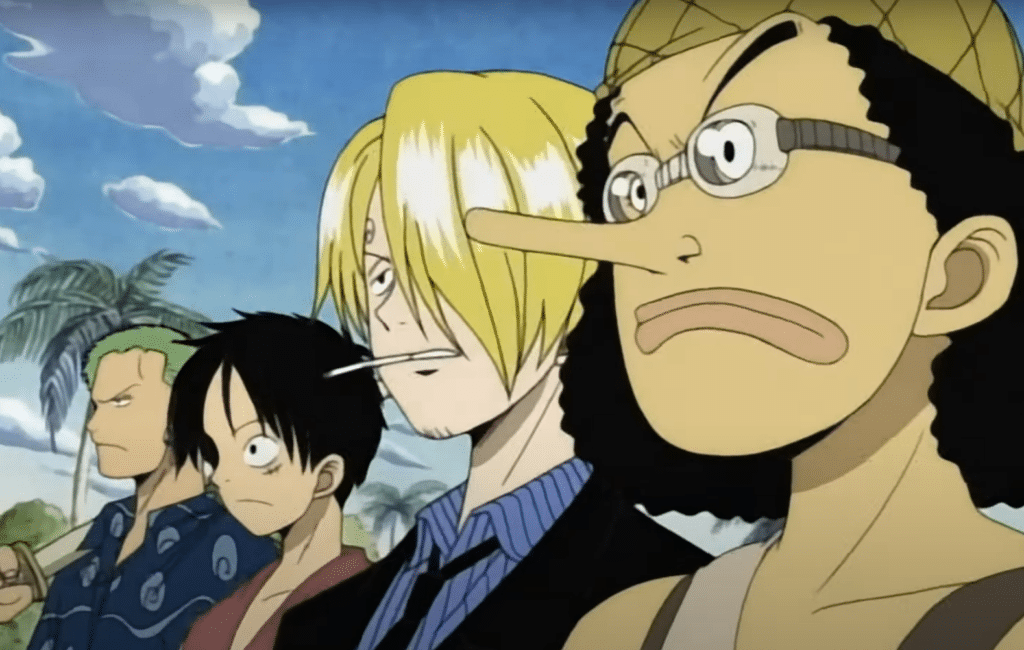
In any discussion with an anime or manga fan, you’ll hear tell of “One Piece.”
This is pretty much the ultimate anime: The first episode came out in 1999 and it’s still going strong with over 800 episodes. It’s spawned an insane amount of tie-ins like over a dozen movies and more than 40 video games.
Its popularity comes from its exciting and often ridiculous nature. The story follows the adventures of pirate Monkey D. Luffy and his crew in their search for a famous treasure called “one piece,” as well as Luffy’s desire to become the pirate king.
This anime is an excellent resource for casual conversation practice, words for adventure and friendship.
10. Naruto — ナルト
This is another long-running anime you may have heard of, with the first episode appearing on our screens way back in 2002.
Naruto starts off as a boy training to be a ninja. However, he’s an orphan and the circumstances surrounding his birth hide a dark secret not commonly known to his classmates.
The first series sees Naruto make his first friends and deal with his sense of self and loss. The second series picks up two and half years later and sees Naruto and his friends become fully proficient ninjas who eventually join in a great war.
It’s best to be aware of some made-up language, such as Naruto’s signature phrase dattebayo. Generally, though, the language in the show’s easy to understand.
11. Bleach — ブリーチ
This anime series ran from 2004 to 2012 and is consistently ranked as a favorite by many anime fans.
Ichigo Kurosaki lives in the world of the living while soul reapers live in a spirit world. By complete chance, he becomes a substitute soul reaper.
The series is about his quest to fight and protect the human world and the spirit world from “hollows,” souls of people who died but didn’t, or couldn’t, move on to the next world.
Altogether there are 366 episodes and although the language used can be a little complicated—such as when it describes different worlds and abilities—it’s a very enjoyable and addictive anime to watch.
Higher intermediate and advanced learners, check it out!
12. Gintama — 銀魂
In a fictional world, the country of the samurai was invaded by aliens. Twenty years later, Gintoki Sakata is one of the last samurai with his trusty wooden sword always by his side.
He’s joined by three sidekicks, along with their giant and very fluffy pet, to offer their services. Basically, they’ll do anything for money.
“Gintama” isn’t as well-known as the previous three and in terms of language it’s quite challenging, but it’s truly one of the funniest anime out there.
This is also a great show to pick up bits of Japanese history and culture, as there are tons of historical references, but set against a ridiculous backdrop.
13. Dragon Ball — ドラゴンボール
This anime incorporates four different series with the first one running between 1986 and 1989, and the latest one from 2009.
The story starts with a boy called Goku and a girl called Bulma on a quest to find the seven dragon balls. Goku ends up getting trained in martial arts, and along with his friends goes on a series of adventures including participating in tournaments.
This is a truly iconic anime, partly due to how many years it’s been running and the international popularity that it’s accrued.
The language varies from serious show-downs and signature move names (say it with me: “Kaaameeehaaammeeeha!”) to sillier speech accompanying similarly silly antics.
14. Sword Art Online — ソードアート・オンライン
“Sword Art Online” is about a fictional new game released in the year 2022, which features a virtual reality helmet that literally puts people into the game. However, at the end of the first day, no one can log out.
An announcement by the game’s creator informs them that they won’t become free until the game is completed—and death in-game means death in real life.
The story follows Kazuto Kirigaya, known in the game as “Kirito,” over the subsequent years as he fights, makes friends and falls in love, the whole time stuck in the game.
It’s an interesting mix of action, friendship and love and the language reflects this. It’s an example of a new generation of manga and anime which feature a more up-to-date world.
15. Attack on Titan — 進撃の巨人
This anime has gotten plenty of attention from fans for its excellent action and intriguing characters and story.
The plot centers on Eren Yeager alongside his family and friends. Humanity is under attack by massive titans and people have been forced to shelter behind giant walls. After the wall is breached in his hometown, Eren’s mother is killed and he vows vengeance.
The show expands beyond this to explore human nature through gigantic, skinless titans. This anime is known to be intense, dark and quite graphic so make sure you’re up to watching this one.
The language is fairly straightforward. Episodes in the later seasons feature a lot of exposition and flashbacks so you’ll get both fun action and valuable learning material.
16. GetBackers — ゲットバッカーズ–奪還屋
Ginji Amano and Ban Mido are two powerful people known as GetBackers. For a price, they’ll go into the more dangerous parts of Tokyo to retrieve stolen or lost things.
One mission leads them deep into a mass of buildings known as the Limitless Fortress. Watch to find out more and enjoy plenty of casual language!
Although this anime only consists of 49 episodes, the story can be quite complex and unusual at times.
17. Polar Bear Café — しろくまカフェ
“Polar Bear Café” may appear to be slightly more childish and aimed at a younger audience compared to other anime on this list, but it’s surprisingly fun to watch at any age.
The plot’s centered on a wise polar bear that runs a café (as you may have guessed), a very lazy young panda and a penguin. Together with their friends, they discuss life, do silly animal things and enjoy life.
The language is quite easy to follow, but at the same time, it’s a goldmine for animal words, useful everyday vocabulary and even wordplay.
18. Hamtaro — とっとこハム太郎
Some of you may remember this show from your childhood.
“Hamtaro” follows the adventures of its titular character Hamtaro, a hamster owned by a 5th-grade girl named Hiroko Haruna.
He befriends other hamsters living nearby, and together they have all kinds of wacky adventures around town. Sometimes they even help the humans out with a few problems of their own!
Since it’s originally meant for children, the language might be a bit easier in this one.
19. Haikyuu!! — ハイキュー!!

After watching a brilliant, short-statured volleyball player, similarly small 9th grader Shoyo Hinata is inspired to create a volleyball team of his own.
Recruiting his friends and classmates, they enter an inter-school tournament, only to be destroyed by the season’s star player, Tobio Kageyama.
Hinata vows to defeat Kageyama, but once he enters Karasuno high school and joins its volleyball team, he finds that his rival is now his teammate!
The fiery passions of Hinata and Kageyama inspire their fellow teammates to build their skills and bonds alike.
This show takes a realistic look at volleyball, featuring vocabulary unique to the sport as well as sports in general, and has inspired many to take it up for themselves.
20. The Promised Neverland — 約束のネバーランド
The orphans of Grace Field House live a perfect life. 12-year-old Emma can’t imagine living anywhere else, alongside her best friends Norman and Ray. There’s only one rule: They cannot pass the gate at the edge of the forest.
However, when they try to return a toy left by a recently adopted housemate, they discover that their home is a far more sinister place, and the three of them plot to escape.
This thrilling horror is a great chase, as the children strategize how to get everyone out safely under the watchful eye of their caretakers, all while trying to discover the mysteries that lie within their home.
Family is a major focus of this series, and you’ll find lots of family-related vocabulary intertwined with talks of strategy.
21. Dr. Stone — ドクターストーン
On the day Taiju Ooki is going to confess to his crush, all of humanity is turned to stone. He wakes up several thousand years later, revived by his classmate Senku, a mad scientist.
Together, they team up to rebuild the world and revive humanity, as well as seek to discover why this happened in the first place.
However, not everyone revived shares their goals, and other humans become their biggest obstacle to saving humanity.
Senku’s mad scientific rambles show how common items are created, and you’ll be learning not only Japanese, but real science!
22. Aggrestsuko — アグレッシブ烈子
Aggretsuko follows Retsuko, a young red panda working as an accountant at a company, where she’s overworked and plagued with interoffice drama, resulting in stress beyond belief.
Her only outlet for her frustration is karaoke, where she sings death metal at the top of her lungs.
Daily life is the subject of this adorable show, as Retsuko and her coworkers get into all sorts of situations everyone can relate to—especially Retsuko’s mental screaming fits at how stressful her job is!
The dialogue mostly covers the workplace, making it a good spot to listen to how employees at a Japanese company communicate with one another (even if they are cute animals!).
23. Keep Your Hands Off Eizouken! — 映像研には手を出すな!
Midori Asakusa has loved anime for her entire life, and is constantly drawing the world around her. Her best friend Sayaka is a business-minded realist who brings her back to earth.
When the two meet model Tsubame Misuzaki, Midori and Tsubame hit it off as anime enthusiasts. Sayaka senses that a profit can be made, and the three band together to form the Motion Picture Club where they create their own anime.
This show captures the world of imagination in a visually captivating way, and also features one of the most realistic portrayals of teenage girls out there.
This show is filled with artistic and animation terms as they go through the steps of creating their own films from scratch.
24. Cells at Work! — はたらく細胞
This show follows the adventures of a red blood cell, a sweet ditz with no sense of direction, and a white blood cell who dutifully carries out his tasks of slaying bacteria that invade the body.
Different illnesses and germs feature in each episode, with the hardworking cells try their utmost to ward them off and keep their body healthy.
This charming and unique take on the systems of the human body are given in a slice-of-life fashion, following the cells throughout their day. You’ll find biological and medical terminology and, like in “Dr. Stone,” learn something besides Japanese!
Want a darker twist on a much less well-cared-for human body? Check out the spinoff, gender-swapped and rather more “adult” version, “Cells at Work! Code Black.”
25. Fruits Basket — フルーツバスケット
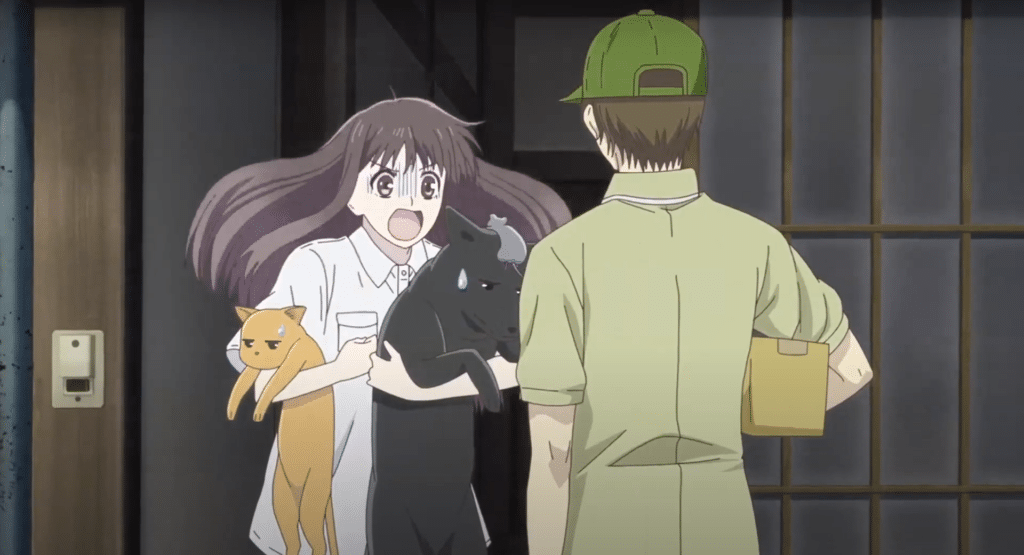
Toru Honda is left orphaned after a tragic accident and is determined to live on her own in a tent. However, it turns out that she’s accidentally camping on the estate of the prominent Souma family.
The kind family takes her in, but she soon discovers their secret: When a member of the family is hugged by someone of the opposite sex, they transform into animals of the Chinese Zodiac.
A classic anime that got a reboot in 2019, telling a beautiful story of healing and self-acceptance. Each character has a unique dialogue and speaking style, with lots of talk of family dynamics.
26. Pokémon — ポケモン
Of course we had to add this anime series that was a smash hit in the U.S. (and frankly, around the world) in the late 90s. “Pokémon” is still beloved today worldwide.
“Pokémon” is great for beginner learners because it’s essentially a children’s show. The show’s spoken Japanese is slow and easy to follow, and the vocabulary it uses isn’t too complicated.
If you watched this show as a kid in English, you’ll also be getting a boost to your understanding of the spoken Japanese since you’ll be able to compare and contrast it to the English dubbed version.
27. My Neighbors the Yamadas — ホーホケキョとなりの山田くん
This anime comedy film may be a bit on the vintage side, but it’s still an incredibly entertaining ride.
“My Neighbors the Yamadas” is a film about the Yamada family and their dog Pochi. The film is a slice-of-life series made up of mini-stories with minimal dialogue.
The language is also fairly informal and mostly involves conversations between family members, which is great for beginners just learning the basics of Japanese. There are tons of laughs and very relatable moments.
28. Cardcaptor Sakura — カードキャプターさくら
The manga group Clamp is a circle of artists made up entirely of women who have been creating manga specifically for girls since 1980s.
“Cardcaptor Sakura” is an anime adaptation of one of Clamp’s most beloved manga series. Sakura is a typical 10-year-old girl who stumbles upon a book of magical cards and is tasked with saving the world.
Like many 少女 (しょうじょ) — “shōjo” or “girls’ anime,” there tends to be a lot of fast-paced dialogue between multiple characters and a bit of youth slang.
As an added bonus, you can compare the language from the original show (which first aired in 1998) to the language spoken in the recent remake (which began airing in 2018).
29. Spirited Away — 千と千尋の神隠し
“Spirited Away” is one of Studio Ghibli’s most widely beloved films of all time and for good reason.
Not only is it visually breathtaking, the coming-of-age story and themes that criticize capitalism, greed and pollution are also beautifully orchestrated.
The film is about a young girl named Chihiro who is literally 神隠し (かみかくし) — spirited away, or taken away from the human world into the spirit world.
“Spirited Away” has minimal dialogue and is fairly easy to understand. The unique variety of voice actors can help beginners pick apart Japanese vocabulary words that may be spoken with varying accents and styles.
30. Paprika — パプリカ
The late Satoshi Kon directed some of the greatest (and, admittedly, strangest) anime films before his untimely death in 2010. “Paprika” was one of his best.
The ultra-surreal film takes place in a future where a newly developed form of dream therapy allows doctors to enter patients’ dreams. The film quickly crescendos into a world where the line between dreams and reality becomes blurred.
“Paprika” has quite a bit of dialogue and is pretty abstract as a whole, but the vocabulary used isn’t extremely difficult to keep up with.
31. Witch Hunter Robin — ウィッチハンター ロビン
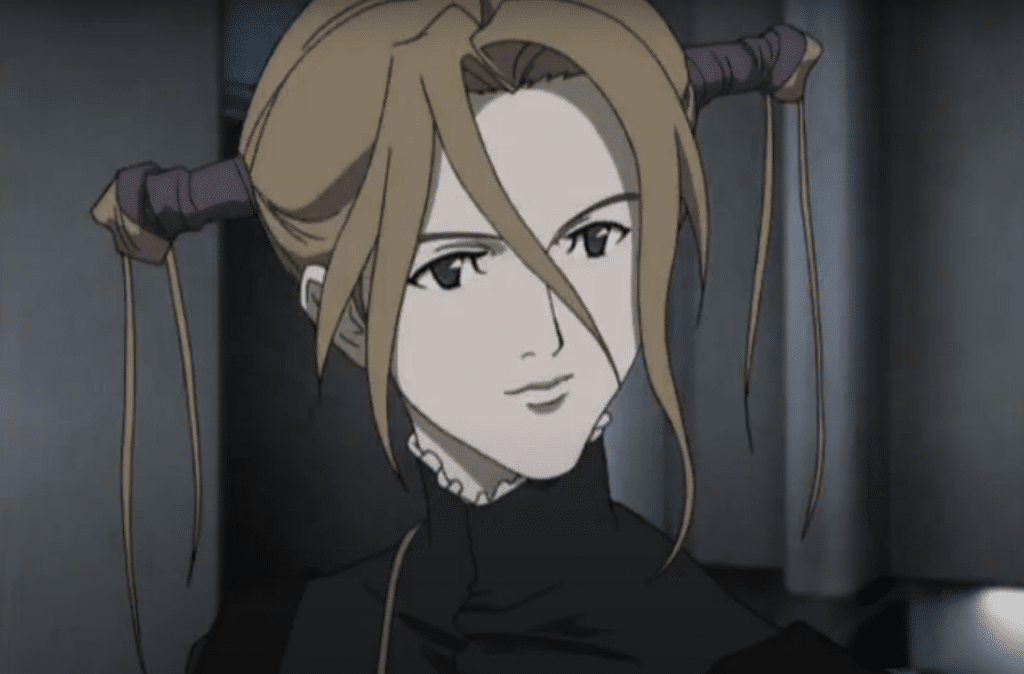
“Witch Hunter Robin” is an atmospheric anime series with a moderate amount of dialogue. It’s an engaging and unique watch for the intermediate Japanese learner.
In this series, a fictional global organization quite literally creates a massive “witch hunt” to eradicate powerful witches from the planet. The series follows one witch employed by the organization, Robin, and her increasing unease with killing her own.
The dialogue in “Witch Hunter Robin” might not be too complicated, but it does use a lot of 外来語 (がいらいご) — loan words, or words taken from English and transliterated into Japanese.
32. Neon Genesis Evangelion — 新世紀エヴァンゲリオン
“Neon Genesis Evangelion” is essential viewing as it’s one of the most well-known anime in the world.
The series follows a group of children are responsible for fighting alien forces in giant mecha (mechanical robots piloted by humans). It’s an action-packed series, but the themes it explores are what really keep viewers engaged.
“Neon Genesis Evangelion” has quite a variety of accents. For example, the character Toji has a noticeably Osaka-ben accent while other characters have very formal city accents.
33. Chobits — ちょびっツ
Clamp makes the list again with “Chobits,” a science fiction rom-com anime about a young man who finds Chi, an abandoned パソコン (ぱそこん) — persocom, or humanoid android.
Together, the two try to find Chi’s origins. The show explores the complex and often strange relationship humanity has with technology.
“Chobits” is a “shōjo” anime at heart, so don’t expect a ton of complicated vocabulary. However, at times the Japanese spoken is very fast and things can get a little too advanced for beginner learners.
The show also uses plenty of vocabulary revolving around relationships, love and friendship.
34. One-Punch Man — ワンパンマン
“One-Punch Man” is a superhero comedy anime. The series trails the adventures of Saitama, a bald superhero with incredible powers who struggles to find a worthwhile opponent.
Since he can defeat anyone with only one punch, he starts getting bored with the lack of a challenge.
We suggest this one watching subtitle-free and working on your listening skills in Japanese, as the show is dense with dynamic dialogue perfect for advanced learners.
35. Durarara!! — デュラララ!!
Headless motorcycle riders? Internet gangs and urban legends? Ghostly fairies? “Durarara!!” has quite a unique plot and engaging story-line that advanced Japanese learners will love.
There’s quite a bit of dialogue and modern Japanese slang to keep up with, so use “Durarara!!” as an opportunity to work on your vocabulary.
The cast of “Durarara!!” boasts characters from all over the place (like an Irish spirit of the undead and a Japanese-speaking Russian man), so you can also use this anime to hear different dialects and speaking styles.
36. Tokyo Ghoul — 東京喰種

If you’re a fan of dark and spooky anime, “Tokyo Ghoul” is a great one to try out.
The series takes place in a universe where human-eating monsters called “ghouls” lurk in the shadows and half-ghouls struggle to exist between both worlds. Be warned: this one gets bloody!
The show explores the meaning of being human and contains many references to the darker aspects of the world, and the dialogue can get philosophical and almost poetic at times.
A solid grasp of Japanese is definitely a must for this one, especially if you plan to watch without subtitles.
37. Death Note — デスノート
The incredibly popular “Death Note” is a crime thriller anime series about a young sociopath who comes into possession of a God of Death’s notebook.
This notebook allows him to kill anyone he wants in any manner just by writing their name and cause of death in the book.
It’s a great show with unexpected twists and turns. The dialogue and situations get very complex very quickly, so you’ll need to listen closely to understand what’s happening.
Be on the lookout for words relating to good and evil, life and death and a surprising amount of food vocabulary.
Where to Watch Japanese Anime
You need to find the right streaming site for each anime that you’re trying to watch, and all your favorite anime shows aren’t always in the same place.
Here are a few places where you can legally find anime to watch (usually for a monthly fee):
- Crunchyroll: This is perhaps the most well-known anime streaming service. It has hundreds of anime to choose from and even simulcasts anime (releases them at the same time as they’re released in Japan).
- Netflix, Hulu and Amazon: These three streaming services have a pretty impressive selection of anime, so definitely check them out if you already have a subscription.
- Anime-Planet: This site partners with other streaming services like Netflix and Crunchyroll to bring fans a huge selection of anime.
You can find even more options for watching anime no matter where you are in the world on Yattatachi.
A Disclaimer About Learning Japanese with Anime
Japanese is an honorific language with different ways of speaking. Think about it this way: you speak differently with your superiors at work than you do with close friends and family, right?
Japanese takes this to another level.
You have to change the way you speak to someone depending on your relationship, but it transcends the straightforward distinction between formal and casual. Your language will change between talking to a friend, family member, work colleague, manager or customer.
Meanwhile, anime characters tend to use slang, casual language, informal pronouns and even made-up words.
Imitating anime characters can leave you speaking like a child or a rude street punk, but you might never know the true meaning of your words and tone. This can be frustrating for both teachers and peers.
The bottom line here is that you need to be aware of the kind of Japanese you’ll absorb in anime-world. As long as you don’t lose sight of your ultimate Japanese language goal—to speak fluently and properly in any situation—anime Japanese definitely has a place in your language learning progress.
Here is how you can avoid common pitfalls when learning Japanese with anime:
- Don’t adopt a new vocabulary word from an anime until you’re certain of its meaning. For example, the main character of Naruto signs off his sentences with a gibberish word, だってばよ (dattebayo). This word is meaningless to most native Japanese speakers.
- Don’t expect real-life Japanese to sound just like anime Japanese. Many anime fans think they already know correct Japanese speech before formally studying the language, but this is often not the case. For instance, you may rarely hear the polite endings desu (です) or -imasu (-います) in an anime but they’re commonly used in polite Japanese.
- Don’t study Japanese for the purpose of watching anime. You’ll be learning lots of important elements of language that you’ll never once hear in anime, and this can be disappointing.
Hang on a second—you might be wondering why all this doesn’t mean that anime is a lousy learning tool.
As long as you mind the aforementioned caveats and totally commit yourself to learning proper, real-world Japanese, anime can be a helpful tool as opposed to a distraction.
Why You Should Learn Japanese with Anime
Now that we’ve gotten all the disclaimers of the way, let’s see why anime actually has a lot to offer any budding Japanese student.
1. It’s an exciting way to learn Japanese.
Settling in with a bowl of popcorn to watch your new favorite program is certainly a break from your ordinary language learning routine of scribbling alphabets into a notebook, copying grammar charts and attempting to cram more vocabulary into your brain.
Kick back, relax, switch those subtitles on and enjoy the many benefits of watching anime!
2. Practice your listening skills
Despite some noteworthy differences, anime Japanese is, obviously, real Japanese. This means that you’ll have the opportunity to reinforce your listening skills for vocabulary, grammar and speech patterns.
3. Learn about Japanese culture through anime
Anime isn’t just something that children watch—it’s a cultural obsession in Japan. As you walk the electric streets of Tokyo, anime characters spring out at you from every direction.
There are statues, paintings, posters, billboards, advertisements, stuffed animals and virtually all possible kinds of merchandise prominently displaying popular anime characters. Large crowds of people dress up anime-style and congregate in downtown Tokyo on a weekly basis.
The artistry and storytelling which characterizes anime permeates every aspect of modern Japanese culture. Watching anime will bring you closer to understanding various aspect of Japanese history and society.
4. There’s an anime for everyone
Did you know that “Pokémon” itself is a true-blue anime? You might have been a fan all along without even realizing it.
That’s okay, it’s pretty normal—lots of newcomers to anime are under the impression that it’s just about samurai adventures or the antics of high school girls.
In reality, anime comes in all imaginable flavors: romance, action, adventure, horror, comedy, sports, spaghetti western, historical—you name it, there’s an anime in that genre. That means you can pick whatever’s most fun for you to watch!
Tips and Tricks for Learning Japanese with Anime
Now let’s figure out exactly how to study Japanese using anime! Here are some important tips and tricks to remember when you sit down for a learning session with your show of choice.
1. High-quality anime means high-quality learning
There are a ton of anime out there. The more outlandish the anime, the more likely you are to hear rather unusual Japanese.
That’s why when you’re looking at potential anime for the purpose of learning everyday Japanese, you should steer clear of anything involving giant space robots, magic powers, fantasy worlds and ghosts.
Three broad anime themes that can be trusted to have more normal, casual language and are generally the best choices for learning Japanese are high school shows, detective dramas and sports anime.
We’ve included a wide variety of genres in our list in this post, so keep your Japanese skill level in mind when you’re picking one out to learn with. To find even more anime to watch, you can check out MyAnimeList.
2. Watch actively, not passively
It isn’t enough to just catch the gist of what the anime characters are saying and doing. Really pay attention.
Writing will help you remember your new words for later. When you pick up on grammar, vocabulary or speech patterns that you recently learned while studying, take notes to strengthen this concept in your mind. If you hear something odd that you haven’t learned yet, jot this down in a notebook and look it up later.
Don’t get too obsessed with understanding every little detail from the get-go—complete comprehension will take time and practice. Just do your best to fill in the blanks as you go along.
3. Double-check what you’ve learned
Yes, this is important enough that we had to mention it twice!
By now you should be fully aware that anime Japanese isn’t always to be trusted when it comes to language—it can be hard to tell if you’re hearing made-up words or silly, messed-up grammar.
When you encounter something new, remember to cross-check your notes with online Japanese language guides and ensure that everything is accurate, real-world Japanese.
4. Use the accompanying manga to aid with comprehension
Manga refers to graphic novels and many anime are based on manga. One fun approach is to buy the manga version of your new favorite anime program (the original Japanese version tends to be very cheap in Japan) and read it first.
While you may be tempted to cheat and buy the English manga, Japanese manga generally always have hiragana written over kanji (called furigana), allowing for easy comprehension.
If you’re at an intermediate level or above, challenging yourself with Japanese manga is a great way to strengthen your reading skills!
Some anime follow the manga dialogue relatively closely, so you’ll basically have a script to follow along with while watching the show. Other anime completely deviate from the source, and comparing the two can be another fun way to test your comprehension.
5. Watch shows of similar genres
If you want to learn a specific set of words, focus on shows that share a genre. You’ll hear the same words in different contexts, which will reinforce them and help commit them to memory.
Say you want to practice Japanese words used in cooking. By finding two or three cooking anime to watch, words describing cooking techniques, foods and flavors will overlap between the shows. Not only will your stomach be growling, but you’ll improve your understanding of those words dramatically!
6. Translate scenes yourself
If you’re an advanced student or have an easy anime, try doing what those dedicated subbers do. Find a short scene from your show and translate it into English (or your native tongue), and then turn on subtitles to see how close you got.
This is a great way to test your comprehension, as well as get a taste of what goes into bringing your favorite anime to you!
FluentU can be a resource to help you test out your translation abilities.
FluentU takes authentic videos—like music videos, movie trailers, news and inspiring talks—and turns them into personalized language learning lessons.
You can try FluentU for free for 2 weeks. Check out the website or download the iOS app or Android app.
P.S. Click here to take advantage of our current sale! (Expires at the end of this month.)

7. Look at characters’ speech styles
Some characters may speak in distinctive dialects that actually reflect real Japanese accents—Osaka being one of the most common. Isolate these characters and compare their speech to standard Japanese.
For instance, the Osaka dialect features やねん in place of なんだ and へん in place of ない. Find a character talking like this, and you’ll get an idea of how people talk in Osaka!
So there you are have it! You’re all set to have fun while you learn Japanese with anime!
Download: This blog post is available as a convenient and portable PDF that you can take anywhere. Click here to get a copy. (Download)
And One More Thing...
If you love learning Japanese with authentic materials, then I should also tell you more about FluentU.
FluentU naturally and gradually eases you into learning Japanese language and culture. You'll learn real Japanese as it's spoken in real life.
FluentU has a broad range of contemporary videos as you'll see below:

FluentU makes these native Japanese videos approachable through interactive transcripts. Tap on any word to look it up instantly.

All definitions have multiple examples, and they're written for Japanese learners like you. Tap to add words you'd like to review to a vocab list.

And FluentU has a learn mode which turns every video into a language learning lesson. You can always swipe left or right to see more examples.

The best part? FluentU keeps track of your vocabulary, and gives you extra practice with difficult words. It'll even remind you when it’s time to review what you’ve learned. You'll have a 100% personalized experience.
Start using the FluentU website on your computer or tablet or, better yet, download the FluentU app from the iTunes or Google Play store. Click here to take advantage of our current sale! (Expires at the end of this month.)
